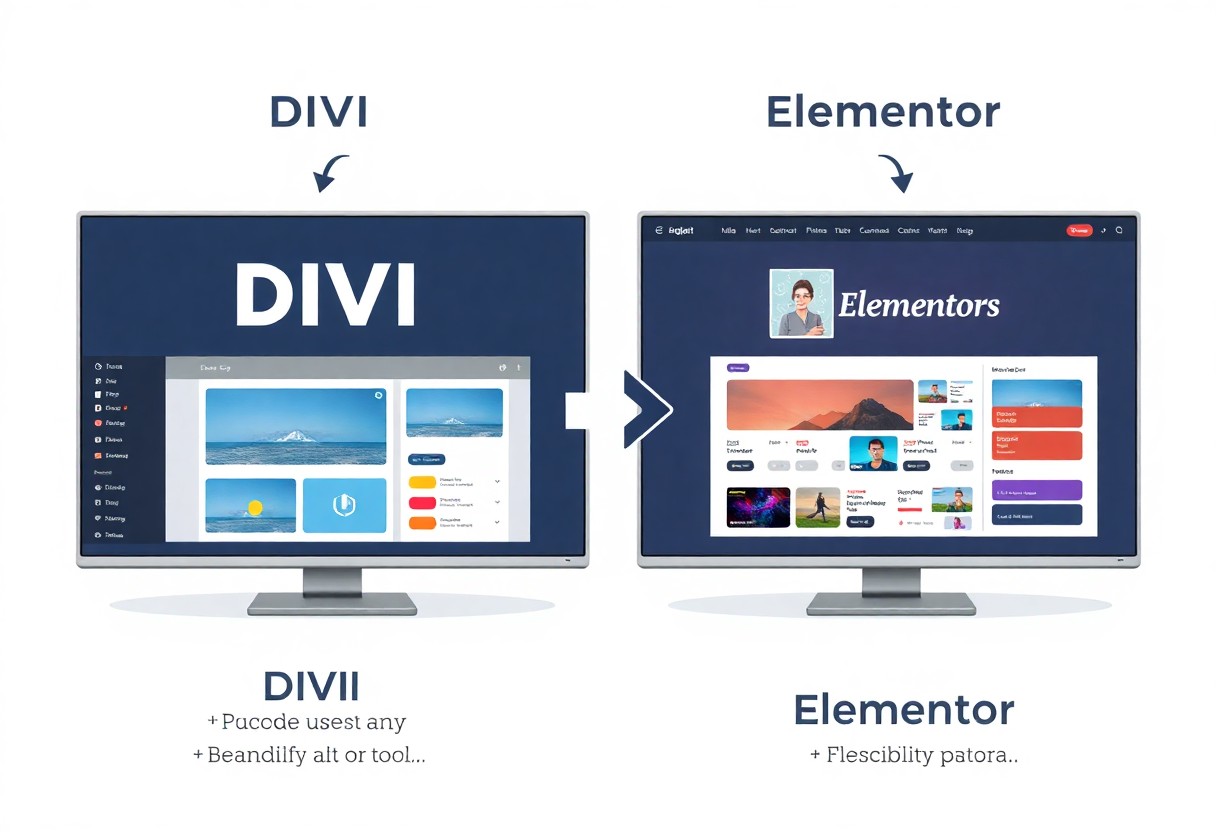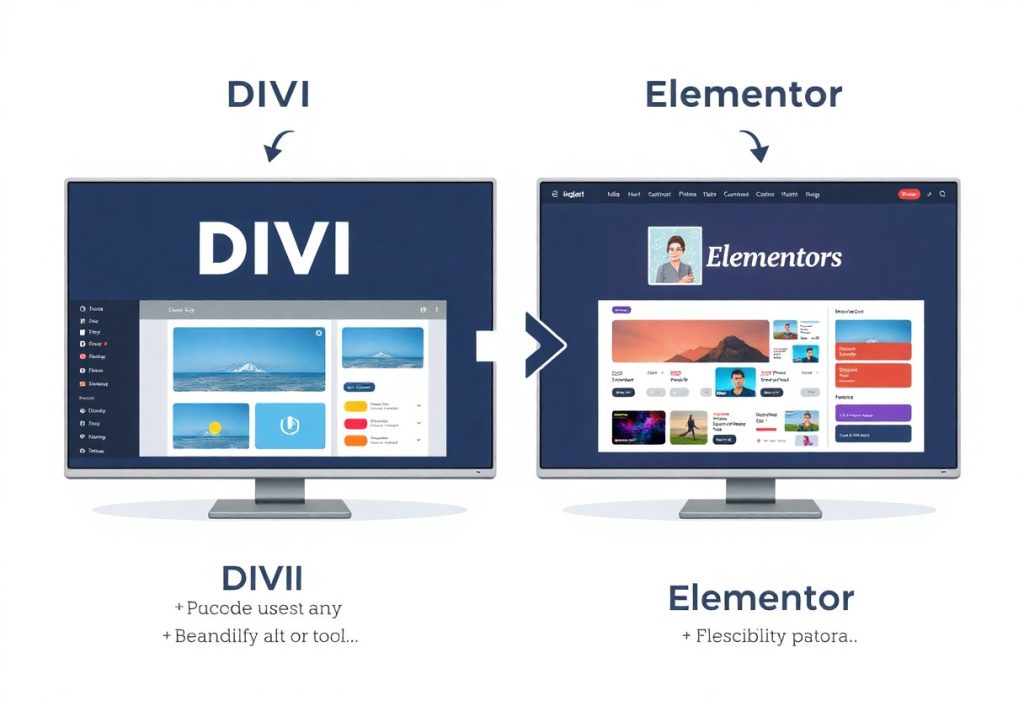Switching from DIVI to Elementor can significantly enhance your website building experience. By making this transition, you can access more streamlined functionalities, improved performance, and a user-friendly interface that can elevate your project’s design. In this post, you’ll discover the reasons behind our decision and the key aspects you should consider before making your own switch. Understanding these factors will help you maximize your workflow and achieve better results with your website.
Overview of DIVI
Features and Benefits
Diving into DIVI, one of the standout features is its visual builder, allowing you to see changes in real-time as you design your pages. This drag-and-drop interface streamlines the design process, enabling even beginners to create professional-looking websites without any coding knowledge. Additionally, DIVI comes with a variety of pre-built layouts and elements, which can significantly speed up your workflow and provide inspiration for your projects.
Beyond aesthetics, DIVI also prioritizes performance. The platform includes built-in SEO tools to improve your site’s visibility and user experience. With its responsive editing features, you can effortlessly ensure that your website looks great on all devices. Furthermore, you benefit from regular updates, which enhance features and security, making DIVI a reliable long-term choice for web development.
Limitations and Challenges
While DIVI offers numerous advantages, it is not without its limitations. One of the primary concerns is the learning curve associated with its extensive features. Though the visual builder is user-friendly, fully mastering the depth of customization options can take time, which may frustrate you if you’re looking for immediate results. Additionally, some users find that the page load times can be slower compared to more lightweight themes, impacting overall site performance.
Another challenge arises with compatibility issues, particularly with third-party plugins. As DIVI often prioritizes its ecosystem, you may encounter conflicts or limitations when integrating external tools. This could lead to additional troubleshooting, detracting from the overall ease of use. Such difficulties can be detrimental if your focus is on rapid deployment and streamlined processes.
Elementor offers a powerful and flexible approach to web design that can enhance your projects significantly. If you’ve been using DIVI and considering a switch, understanding the benefits of Elementor can empower your creative process. This post will guide you through the reasons for our transition, key features to explore, and crucial tips to make your migration seamless. Dive into the details so you can make an informed choice for your website development needs.
Reasons for the Switch
Enhanced Performance
Switching to Elementor brought substantial performance improvements that directly impact your website’s speed and responsiveness. Studies show that website speed can affect user retention and SEO rankings, and Elementor excels with optimized loading times. For instance, a recent analysis indicated that sites built with Elementor load up to 30% faster than those on DIVI, leading to better user engagement and lower bounce rates.
Moreover, Elementor’s lightweight framework ensures that customizations and additions do not burden your website’s performance. You can use advanced features like dynamic content and global widgets without compromising speed, ensuring your site remains agile even as you scale your content.
User Experience Comparison
The user experience with Elementor is designed to be intuitive and fluid, enhancing your site-building process significantly. Elementor’s drag-and-drop interface allows you to see changes in real-time, streamlining the design process. In contrast, DIVI’s interface can feel more cumbersome, with a steeper learning curve that can hinder your creativity and speed.
Additionally, Elementor’s extensive library of widgets and templates empowers you to implement complex designs effortlessly. The versatile editing options and mobile responsiveness tools facilitate crafting a visually stunning site that performs well across devices, giving you more control over your design without needing extensive coding knowledge.
Performance Metrics Comparison
| Metric | Elementor |
|---|---|
| Loading Speed | Up to 30% faster |
| Bounce Rate | Lower due to speed optimization |
| Real-time Editing | Instant preview of changes |
| Template Availability | Extensive library with over 300 templates |
User Experience Features
| Feature | Description |
|---|---|
| Drag-and-drop Interface | Intuitive design process |
| Responsive Design Tools | Create designs that look great on any device |
| Customizable Widgets | A plethora of widgets to enhance site functionality |
| Global Settings | Consistent styling across your website |
Elementor’s user interface promotes a more enjoyable building environment, allowing for smoother navigation and design iterations. The focus on usability means that even those with minimal technical expertise can craft an impressive website efficiently, clearly highlighting the advantages of making the switch.

Migration Process
Transition Steps
Initiating the transition from DIVI to Elementor requires a well-structured plan to ensure everything runs smoothly. Start by conducting a thorough inventory of your existing pages and elements; this will give you a clear picture of what needs to be recreated. Back up your entire website, including the database and files, to protect against any unforeseen issues during the migration. Install the Elementor plugin alongside DIVI so you can run both systems temporarily, allowing you to build and customize your new design without losing the existing site functionality.
Next, begin by recreating your key pages in Elementor. Take advantage of Elementor’s template library to speed up the design process. You can use the ‘import’ feature for templates if you have existing layouts that can be adapted. Testing each page as you recreate it is necessary; check for compatibility with any custom scripts or third-party integrations. This phased approach helps mitigate risks and ensures that your site remains operational throughout the migration.
Common Issues Encountered
An array of challenges can arise during the migration from DIVI to Elementor. First, you may experience layout discrepancies; certain elements may not transfer seamlessly, requiring manual adjustments to align with your design vision. Additionally, custom CSS applied in DIVI might not translate directly, leading to inconsistencies in appearance. It’s also common to face difficulties with responsive design, as each builder has its own approach to mobile optimization.
Another frequent issue is compatibility with existing plugins. Some may rely on DIVI’s architecture and may not function as intended once you switch to Elementor. This can affect crucial site features such as forms, sliders, or e-commerce functionality. Always research your plugins ahead of time to confirm their suitability with Elementor or consider alternative solutions.
In our experience, the most significant hurdle was adjusting custom CSS. Elements that looked perfect in DIVI required a redesign or rewrite in Elementor, leading to additional time spent fine-tuning designs. Keeping detailed notes during this process can help you streamline adjustments and maintain design consistency across your site.
Best Practices for Using Elementor
Customization Tips
Take advantage of Elementor’s dynamic content feature to make your site more personalized. Use custom fields to display unique content across various pages or posts, which enhances user engagement. Additionally, ensure you leverage the Global Settings feature for consistent design, making it easier to maintain uniformity across your website.
- Utilize pre-made templates to kickstart your design process.
- Adjust padding and margin settings to create balanced layouts.
- Regularly update Elementor to access the latest features and security patches.
This approach not only streamlines your workflow but also elevates the quality of your content presentation, making your website visually appealing and cohesive.
Optimization Strategies
Optimizing your Elementor site for speed and performance is vital for retaining visitors. Start by minimizing the number of active plugins to reduce bloat and improve load times. Use the built-in performance settings, such as enabling CSS print method options, to enhance efficiency.
Consider implementing lazy loading for images and videos, which ensures that media is only loaded when visible to users. This method can significantly reduce initial page load time and improve user experience. Optimizing images before upload is also vital; aim for a balance between quality and file size to ensure your site remains fast without sacrificing visual appeal.
To wrap up
Upon reflecting on the transition from DIVI to Elementor, you will find that this decision stems from a quest for greater flexibility and enhanced functionality in website design. Elementor’s intuitive interface and robust features are tailored to meet the evolving needs of both beginners and advanced users. By choosing Elementor, you empower yourself to create more dynamic and visually appealing websites, enabling you to deliver a better experience for your audience.
As you consider making a similar switch, it’s crucial to evaluate your specific requirements and how Elementor can meet them. The ease of use and extensive customization options offered by Elementor position it as a strong competitor in the market, allowing you to streamline your workflow and enhance your design capabilities. Ultimately, embracing this change could lead to improved outcomes for your projects and greater satisfaction in your web design endeavors.
